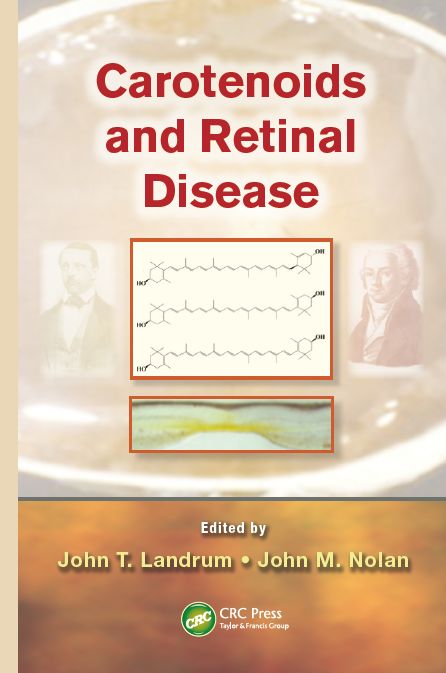Carotenoids and Retinal Disease by John T. Landrum and John Nolan
English | 2013 | ISBN: 1466502045 | 272 pages | PDF | 19,3 MB
English | 2013 | ISBN: 1466502045 | 272 pages | PDF | 19,3 MB
The macular carotenoids play key roles in eye health and retinal disease. Age-related macular degeneration (AMD), the most common cause of acquired blindness in much of the world, is associated with low levels of macular pigment.
Macular pigment is also essential for enhancing visual performance by reducing glare disability and improving photostress recovery. Carotenoids and Retinal Disease presents an up-to-date, thorough volume devoted to the chemistry, pathobiology, visual science, and medical and public health significance of the macular carotenoids.
With contributions from an international group of leading experts, this book covers a range of topics, from macular anatomy to clinical trials. It begins with a chapter tracing the discovery of macular pigment through the more recent functional recognition of carotenoids. The text covers AMD risk factors, epidemiology, pathogenesis, and classifications. It reviews evidence from epidemiological studies of relationships between AMD and the carotenoids lutein, zeaxanthin, and meso-zeaxanthin, as well as evidence from clinical trials on the effects of macular carotenoid supplementation in subjects with AMD and normal subjects.
The book explores the use of molecular genetics in studying macular pigment and AMD pathogenesis; bioavailability of macular pigment; functions of lutein, zeaxanthin, and meso-zeaxanthin; and the identification of macular carotenoid binding proteins involved in pigment uptake and transport. It also covers xanthophyll–membrane interactions, and the macular carotenoids in human serum and their capacity to protect against AMD. Further, the implications of light distribution on the retina for AMD are discussed. Advancing our understanding of how the macular carotenoids enhance vision and prevent vision loss, this book provides a valuable reference for researchers and clinicians involved in the treatment and prevention of retinal disease.



